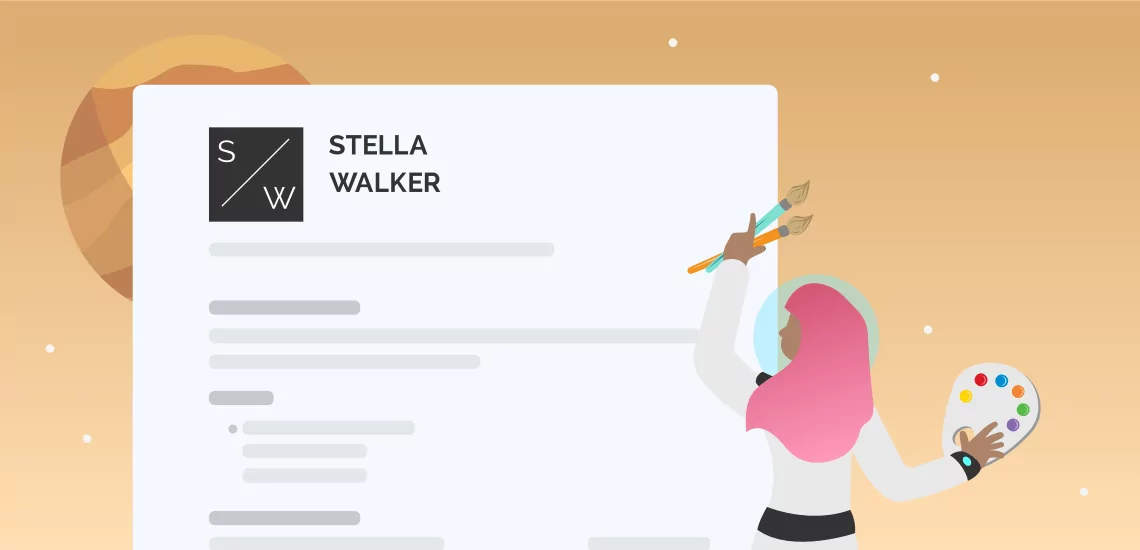Interior design can be a very competitive field with many job opportunities. Write a better interior design resume with our top resume tips.

Interior Design Resume Examples to Help You This Year
Interior Design Resume Example
Interior design is a sought-after job, especially because different individuals will use diverse design strategies. And landing a job is as much about having the right design strategy as it is about being capable in your field. That means your resume needs to show the hiring manager that you have the skills necessary to succeed as an interior design expert. Here are a few ways to do this more effectively.

Jobs That Can Use Interior Design Resumes
Many different jobs use elements of interior design within their job duties. Here are a few job titles that might benefit from this type of resume:
- Design firm employee
- High-end retail designer
- Design team member
- Production designer (for theater and film)
- Showroom designer
If a significant portion of your work process will be space planning and design, you can probably use this resume format.
Important Elements for Interior Design Resumes
Before you start your resume, choose the right resume format. There are three resume formats: chronological, functional and combination. The chronological format prioritizes work history and is best for individuals with 10 years of experience or more. The functional format emphasizes skills and is better for job seekers from entry-level to three years of experience as well as for career gaps. Lastly, the combination format highlights both work history and skills and is the best choice for career changers or individuals with three to nine years of experience. Once you’ve chosen the right format, depending on your skills, experience and what you want to emphasize, you can move on to creating your resume.
Resume summary or objective
The header of your resume must include a two- to three-sentence paragraph showing off your skill set and accomplishments. If you have little to no experience, you should write a resume objective, which highlights your skills and education, and ends with a career goal. If you have more experience, you should write a resume summary that highlights your expertise and achievements instead.
Skills
Your skills section needs to include both hard skills and soft skills. Here are a few bullet points to help you brainstorm interior design skills for your resume:
- Use of design software (AutoCAD, InDesign, SketchUp, Autodesk Revit)
- Use of Adobe Creative Cloud (Adobe Photoshop, Illustrator, etc.)
- Problem-solving skills
- Project management
- Work with commercial clients
- Creating design concepts
- Drawing up design plans and renderings
- FF&E selection
- Interpersonal skills
- Teamwork
- Time management skills
Remember to read through the job description to find the right keywords for your resume before you write the skills list for a specific application.
Work experience
Your work experience section can include up to 10 years of experience in interior design. This can also have informal experience, such as providing regular input on interior design at a previous job where you were employed as a sales associate.
Education
Your education section should include the name of the college or university you went to for interior design. This is usually a bachelor’s degree, but depending on your specific job posting, it might consist of a different type of degree. Steer clear of listing your GPA, and instead list any honors you received.
Certifications
There are many interior design qualifications that you can list on your resume. The most recognized is the NCIDQ certification, but you can also include other qualifications that can boost your resume above others.
Interior Design Resume Examples You Can Use
Looking at an interior designer resume sample can be one of the best ways to determine how you should structure your resume. Use the resume examples at ResumeNerd to find plenty of samples to understand how other candidates are writing their resumes.
-
Tips for Creating Your Interior Design Resume
Keep these tips in mind when creating your interior design resume:
- Use a resume template that reflects your design philosophy. A decorator who loves using color should use more resume colors than one who designs in elegant black and white.
- Be as concise as possible. Your resume should only be one page long unless it’s impossible to cut it down from two pages, which is only recommended for more experienced applicants.
- Always use a resume builder to craft your resume. The ResumeNerd resume builder is a great way to create a professional resume.
FAQ: Interior Design Resume Examples
Cover letters help you give personality to your job application. When you have years of experience, it’s often impossible to spotlight all of it in a resume, so you can share your best experiences on your cover letter. Show off your top interior design projects and describe why you’re the best person for the job in the cover letter. You can even use the ResumeNerd cover letter builder to make writing easier.
Entry-level interior designers usually don’t have years of experience to include in their resumes. If this is your situation, it’s best to focus on your skills and knowledge instead. You can also include academic and internship experience, proving that you have the skills necessary to do this work.
There’s no such thing as a single “perfect resume.” Instead, you should write a resume, then tailor each resume to the job description to make it the finest resume for that position. Look through the job description and see what resume skills and experiences the recruiter is looking for in the description. Add those key terms to your resume to reflect those specific needs and desires.








